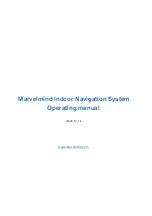
2050
User Guide
Chapter 1 Introduction
The 2050
GPS
sensor delivers unmatched accuracy to the precise positioning community who
need a cost-effective, high performance
GPS
sensor. These unique receivers use the
StarFire
Network, NavCom’s worldwide
Differential GPS
system, for instant decimeter level
position
accuracy, virtually anywhere in the world, anytime.
System Overview
GPS
Sensor
The 2050 sensor consists of a 10-
channel
dual frequency
precision
GPS
sensor with two
additional channels for receiving
Satellite Based Augmentation System (SBAS)
signals and
an
L-Band
demodulator for reception of C-Nav
StarFire
Network correction service, for
decimeter-level position accuracy, anywhere in the world, anytime. The sensor can output
proprietary raw data as fast as 50Hz (optional) and
Position Velocity Time
(
PVT
) data as
fast as 25Hz (optional) through two 115kbps serial ports. The 2050 model sensors deliver
unmatched positioning accuracy to system integrators needing a cost-effective, high
performance differential
GPS
sensor.
The 2050 has a built-in
L-Band
demodulator for reception of C-Nav
StarFire
Network
correction service giving an immediate solution for the user utilizing the global Real-Time
Gypsy (RTG) and regional Wide area Correction Transform (WCT) solutions. Additionally,
the unit can accept corrections for
DGPS, WAAS/EGNOS,
assuring seamless position
output.
The 2050G is packaged for mobility. It can be used for
Geographical Information System
(GIS)
,
aerial and hydrographic surveying, and
post-processed dual-frequency
surveys. The
GPS sensor can be carried in a backpack with the antenna either pole-mounted from the
backpack or on a survey pole with a single cable connection.
The 2050M is ideal for vehicle mounting to suit a wide variety of machine guidance and
control applications in agriculture, mining, aerial, and hydrographic surveying. It is equipped
with additional features allowing interconnectivity with a wide variety of antennas, vehicle
data busses and other instrumentation to suit specific applications and configurations. The
2050M also has a 1
PPS
output port and a combined
Event/CAN Bus
interface port.
Both 2050 models can output proprietary raw data as fast as 50Hz (optional) and
Position
Velocity Time
(
PVT
) data as fast as 25Hz (optional) through two 115kbps serial ports with
less than 20ms latency. The horizontal accuracy of 1 cm or better and the vertical accuracy
of 2 cm or better are maintained as each output is independently calculated based on an
actual
GPS
position measurement, as opposed to an extrapolation between 1Hz
measurements.
1-1
Summary of Contents for 2050
Page 2: ...1 2 ...
Page 8: ......
Page 14: ...2050 User Guide This Page Intentionally left blank 6 ...
Page 17: ...2050 User Guide Figure 2 2050 Front View Figure 3 2050M Only Back View 2 9 ...
Page 22: ...2050 User Guide This Page Intentionally left blank 2 14 ...
Page 34: ...2050 User Guide This Page Intentionally left blank A 26 ...
Page 42: ...2050 User Guide This Page Intentionally left blank C 34 ...
Page 43: ...2050 User Guide C 35 ...
Page 44: ...2050 User Guide This Page Intentionally left blank C 36 ...
Page 58: ...2050 User Guide This Page Intentionally left blank C 50 ...
Page 60: ...2050 User Guide This Page Intentionally left blank C 52 ...
Page 62: ...2050 User Guide C 54 ...
Page 64: ...2050 User Guide C 56 ...
Page 65: ...2050 User Guide C 57 ...










































